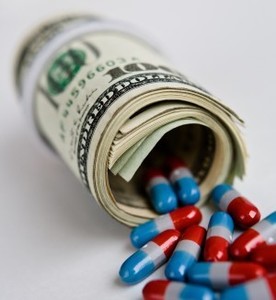Drugs are least affordable relative to income in low-income countries, according to an analysis of income, competition and procurement on drug prices in emerging markets [1].
Pharmaceutical pricing in middle- and low-income countries is an important and contentious issue. In such countries most patients lack healthcare insurance and pay out-of-pocket for drugs, therefore pricing drugs in line with income is critical to ensure affordability. However, incentives for pricing in line with mean income may be undermined by comprehensive health insurance in high-income countries, which in turn is counteracted by payer regulation of drug prices; price spillovers across countries (due to parallel trade and external referencing); and by skewness (asymmetry) of income distributions in middle- and low-income countries.
An analysis was carried out using data from IMS Health on ex-manufacturer prices to retail pharmacies for originator and generic drugs for cardiovascular and anti-infectives and also for HIV/AIDS, malaria and tuberculosis drugs in 37 countries, including high and low-income countries.
Although generics were found to be priced roughly 30% lower than originators on average, large variations in prices were observed. Additional generics competitors were found to only weakly affect prices in middle- and low-income countries, possibly due to uncertainty about the quality of generics, which leads to competition based on brand rather than price. The reason for this is that, in contrast to the strict regulatory standards required by high-income countries, most middle- and low-income countries admit that generic copies are marketed as functionally equivalent to the originator but are not required by regulation to demonstrate bioequivalence or meet international good manufacturing practice standards.
The results of the study showed that the poorest countries may face the highest prices relative to per capita income. Skewed income distributions in middle- and low-income countries were found to exacerbate high drug prices relative to income. Procurement for HIV/AIDS, malaria and tuberculosis drugs, however, was found to reduce originator and generics prices by 42.4% and 35%, compared with their respective retail pharmacy prices. Procurement reduces uncertainty about quality by imposing minimum quality standards, thereby attracting multinational generics suppliers and focusing competition on price. Originator manufacturers may also be more willing to grant discounts to procurement because this channel is less prone to price spillovers to other countries.
The authors concluded that evidence on ex-manufacturer prices for both originator and generics suggests that income-related price discrimination and competition alone are unlikely to achieve affordable prices in low-income countries. In light of this conclusion, the authors called for better mechanisms to be found to enable differential pricing between and within middle- and low-income countries.
Conflict of interest
The authors of the research paper [1] declared that the research was supported in part by Eli Lilly’s Project on Fair Prices for Pharmaceuticals. No other conflicts of interest were reported.
Related article
Quality of generics in South Africa
Reference
1. Danzon PM, Mulcahy AW, Towse AK. Pharmaceutical pricing in emerging markets: Effects of income, competition and procurement. Health Econ. 2013. [Epub ahead of print]
Permission granted to reproduce for personal and non-commercial use only. All other reproduction, copy or reprinting of all or part of any ‘Content’ found on this website is strictly prohibited without the prior consent of the publisher. Contact the publisher to obtain permission before redistributing.
Copyright – Unless otherwise stated all contents of this website are © 2014 Pro Pharma Communications International. All Rights Reserved.








 0
0











Post your comment